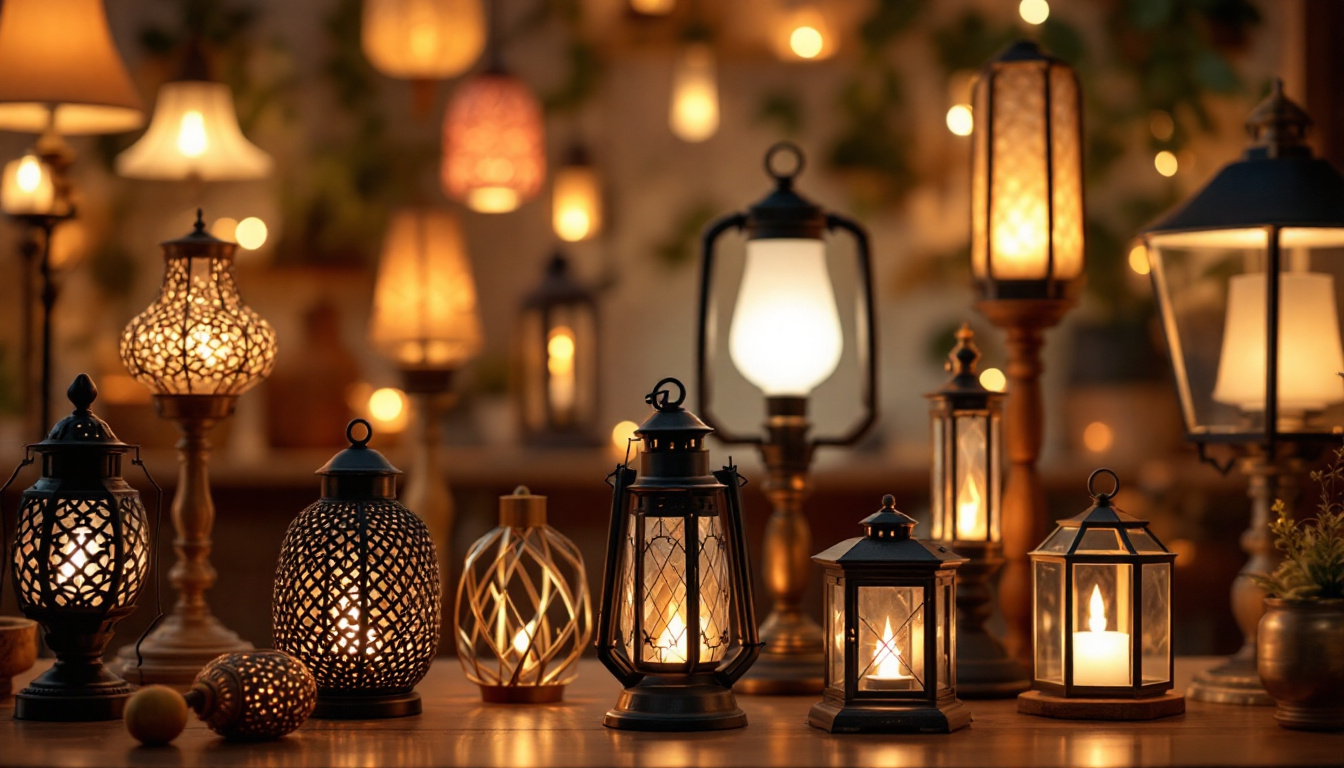
Lighting is an essential aspect of any construction or renovation project, and for lighting contractors, mastering the art of lamps and lanterns is crucial. Whether it’s for residential, commercial, or outdoor settings, understanding the nuances of different lighting options can significantly enhance the quality of work and client satisfaction. This article explores the top resources available to lighting contractors, providing insights into the latest trends, techniques, and tools that can elevate their craft.
Before diving into specific resources, it’s vital for lighting contractors to have a solid grasp of the fundamentals of lighting design. This includes understanding the different types of lighting—ambient, task, and accent—and how they can be effectively combined to create a harmonious environment.
Ambient lighting provides overall illumination, while task lighting focuses on specific areas where activities are performed. Accent lighting, on the other hand, is used to highlight particular features or objects. Mastering these concepts allows contractors to design spaces that are not only functional but also aesthetically pleasing. Additionally, it’s important to consider the interplay between natural and artificial light, as this can significantly influence the overall ambiance of a room. Natural light can enhance the beauty of a space, while artificial lighting can complement and enhance the effects of daylight, creating a dynamic and inviting atmosphere.
Several key principles guide effective lighting design. First, the concept of layering light is essential. By combining different types of lighting, contractors can create depth and dimension in a space. Secondly, understanding color temperature and its impact on mood is crucial. Warm tones can create a cozy atmosphere, while cooler tones can enhance focus and productivity. This understanding extends to the selection of light fixtures as well; for instance, using dimmable options can allow for adjustments in brightness, catering to various activities and times of day.
Finally, the placement of fixtures plays a significant role in the effectiveness of the lighting. Strategic positioning can help eliminate shadows and ensure even distribution of light, enhancing both functionality and visual appeal. Moreover, considering the height and angle of fixtures can further refine the lighting experience. For example, wall-mounted sconces can provide a soft wash of light that enhances architectural features, while pendant lights can create focal points over dining areas or kitchen islands. By thoughtfully integrating these elements, lighting contractors can transform ordinary spaces into extraordinary environments that are both inviting and practical.
With a solid foundation in lighting design principles, contractors can turn to various resources for further learning and development. These resources range from online courses and webinars to industry publications and trade shows. The continuous evolution of technology and design trends means that staying informed is not just beneficial, but essential for success in this competitive field.
Many organizations offer online courses that cover various aspects of lighting design and installation. These courses often include video tutorials, interactive quizzes, and downloadable resources that allow contractors to learn at their own pace. Platforms like Coursera and LinkedIn Learning provide courses specifically tailored for lighting professionals, covering topics from basic principles to advanced techniques. Furthermore, many of these courses are developed in collaboration with industry experts, ensuring that the content is both relevant and practical.
Webinars are another excellent resource, often hosted by industry experts and manufacturers. These sessions provide insights into the latest trends, technologies, and products in the lighting industry. Participating in these webinars not only enhances knowledge but also offers opportunities for networking with other professionals. Many webinars also include Q&A sessions, allowing participants to engage directly with the speakers and gain personalized insights that can be applied to their own projects.
Staying updated with the latest industry trends and innovations is crucial for lighting contractors. Industry publications such as “Lighting Design + Application” and “LD+A” offer valuable articles, case studies, and product reviews that can inform and inspire contractors. These publications often feature interviews with leading designers and engineers, providing insights into successful projects and emerging technologies. Additionally, many articles delve into the practical applications of new lighting technologies, showcasing how they can enhance both functionality and aesthetics in various settings.
Additionally, subscribing to newsletters from reputable lighting manufacturers can keep contractors informed about new product launches, best practices, and industry events. This knowledge can be instrumental in making informed decisions for client projects. Furthermore, many manufacturers also provide technical guides and installation manuals that can serve as invaluable references during the design and implementation phases. Engaging with these resources not only broadens a contractor’s technical expertise but also fosters a deeper understanding of how to integrate innovative solutions into their work, ultimately leading to more successful and satisfying outcomes for their clients.
Networking is an invaluable resource for lighting contractors. Engaging with peers and industry leaders can lead to new opportunities, collaborations, and insights that can enhance one’s skill set and business acumen.
Professional associations such as the Illuminating Engineering Society (IES) and the International Association of Lighting Designers (IALD) provide a wealth of resources for members. These organizations often host events, workshops, and conferences that facilitate networking and knowledge sharing among lighting professionals.
Membership in these associations also often grants access to exclusive resources, including technical papers, design guides, and industry standards that can enhance a contractor’s expertise and credibility.
Attending trade shows and conferences is another excellent way for lighting contractors to expand their knowledge and network. Events like LightFair and the International Lighting Expo showcase the latest products, technologies, and trends in the lighting industry. These gatherings provide opportunities to meet manufacturers, explore new products, and gain insights from industry leaders through keynote speeches and panel discussions.
Moreover, participating in workshops and hands-on demonstrations at these events allows contractors to gain practical experience with new tools and technologies, further enhancing their skill set.
Having the right tools and equipment is critical for lighting contractors to execute their projects efficiently and effectively. From design software to installation tools, the right resources can make a significant difference in the quality of work.
Lighting design software is an essential tool for contractors looking to create accurate and visually appealing lighting plans. Programs like DIALux and AGi32 allow contractors to simulate lighting designs in a virtual environment, enabling them to visualize how different fixtures and layouts will perform in real-world settings. These tools can also assist in calculating lighting levels and energy consumption, which is crucial for meeting client specifications and building codes.
Additionally, many software solutions offer libraries of fixtures and materials, allowing contractors to experiment with various combinations to achieve the desired effect. This capability can enhance the design process and lead to more satisfied clients.
Beyond design software, having the right installation tools is essential for any lighting contractor. Basic tools such as screwdrivers, pliers, and wire strippers are fundamental, but specialized tools can enhance efficiency and safety during installations. For example, using laser levels can ensure precise alignment of fixtures, while wire connectors and electrical tape can simplify the wiring process.
Investing in high-quality tools not only improves the quality of work but also reduces the likelihood of errors and rework, ultimately saving time and resources on projects.
The lighting industry is constantly evolving, with new technologies and design trends emerging regularly. For lighting contractors, staying ahead of these trends is essential for maintaining a competitive edge and meeting client expectations.
One of the most significant trends in the lighting industry is the rise of smart lighting technology. Smart lighting systems offer enhanced control and customization, allowing users to adjust brightness, color, and scheduling through mobile apps or voice commands. For contractors, understanding how to integrate these systems into their designs is crucial.
Moreover, smart lighting can contribute to energy efficiency, which is increasingly important to clients. By incorporating energy-efficient solutions such as LED fixtures and smart controls, contractors can help clients reduce their energy consumption and lower utility bills, making their services more attractive.
In addition to smart technology, sustainability is a growing concern in the lighting industry. Clients are increasingly seeking eco-friendly options that minimize environmental impact. Lighting contractors can stay ahead by familiarizing themselves with sustainable materials and energy-efficient technologies.
Utilizing LED lighting, which consumes significantly less energy than traditional incandescent bulbs, is one way to promote sustainability. Additionally, contractors can explore options for solar-powered lighting solutions, particularly for outdoor applications. By offering sustainable lighting solutions, contractors can appeal to environmentally conscious clients and differentiate themselves in a competitive market.
Mastering the art of lamps and lanterns requires a combination of knowledge, skills, and resources. For lighting contractors, understanding the fundamentals of lighting design, leveraging educational resources, networking with industry professionals, and staying ahead of trends are all crucial steps toward success.
By investing in the right tools and embracing new technologies, contractors can enhance their services and provide clients with innovative, high-quality lighting solutions. Ultimately, a commitment to continuous learning and adaptation will ensure that lighting contractors remain at the forefront of the industry, ready to tackle new challenges and seize opportunities as they arise.
Ready to elevate your lighting projects with the best resources at your fingertips? Look no further than LumenWholesale, where we provide lighting contractors with top-quality, spec-grade lighting products at unbeatable wholesale prices. Our commitment to cutting out the middleman means you get superior lighting products without inflated markups, ensuring every project shines with reliability and high performance. Plus, with free shipping on bulk orders, you can enjoy premium lighting at the best value — without hidden fees or compromises. Don’t miss out on the perfect blend of quality, affordability, and convenience. Visit LumenWholesale today for Wholesale Lighting at the Best Value and transform your lighting expertise into stunning, cost-effective results.

Explore the essential insights lighting contractors need to meet client expectations, from design trends to technical expertise, in this comprehensive guide on can light installations..

Discover the essential role of timer switch battery walls in modern lighting installations.

Discover how lighting contractors are transforming projects with Electric Soket.

Discover the latest trends in outdoor flood lighting that every lighting contractor needs to know.